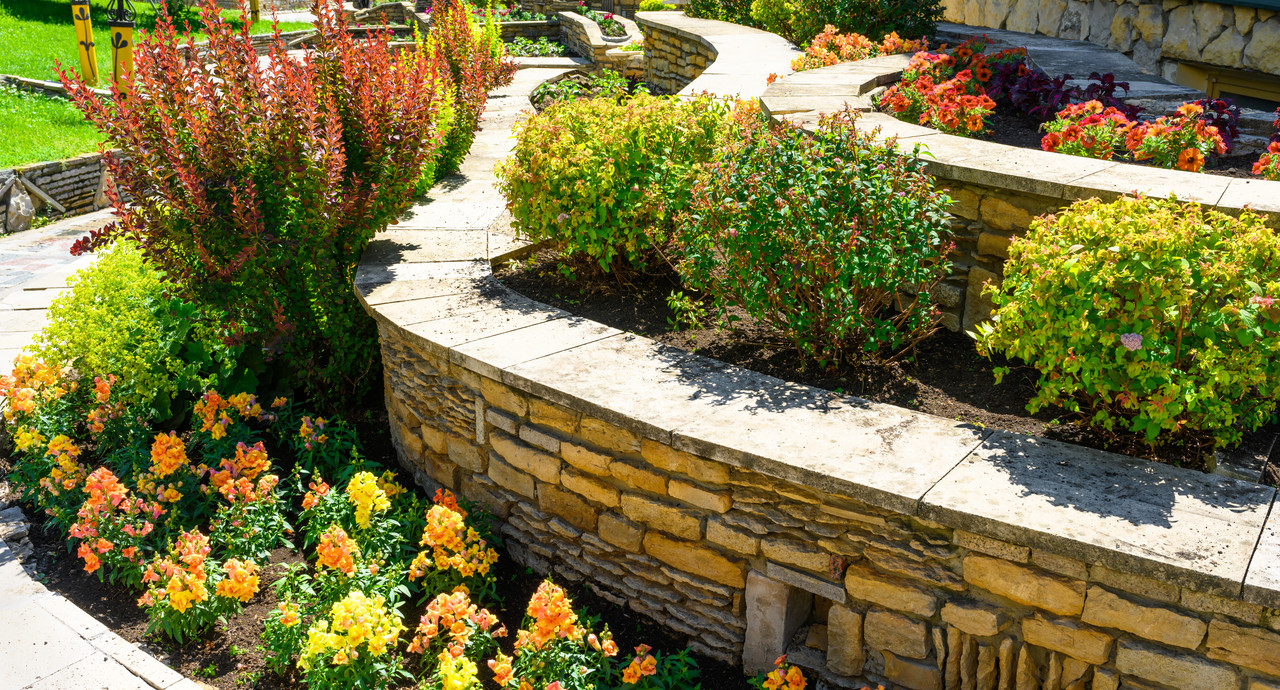Retaining Wall Ideas
by siteadmin

Retaining walls are an essential part of a landscape garden. A retaining wall can effectively mark the border of a lawn or prevent erosion in a sloping area. A retaining wall can also act as an attractive focal point to draw attention to an architectural element of the design. However, a retaining wall can have different effects on different landscapes, depending on the type and function of the retaining wall.
Retaining walls can be built for many different purposes: to control erosion, support buildings and structures, or improve a landscape's aesthetics. Some homeowners may prefer to use retaining walls to improve the landscape's aesthetic appearance while preserving the retaining wall's function. A retaining wall can affect the natural movement of water, so any water-absorbing material (such as gravel) should be added to a landscape garden. You might also need to schedule a soil inspection to ensure that the construction of a retaining wall will not create drainage issues in your neighborhood.
There are a few different options for constructing a retaining wall. The most expensive option is to build a one-sided wall from individual bricks. Individual bricks will need to be arranged on a flat foundation, making landscaping more difficult. Bricks that are not secured to the foundation are likely to break off and move around the yard, potentially causing damage to flower beds or the appearance of uneven ground. Bricks are also more likely to become weak and even blow away if they are stressed too much by wind.
Another less expensive option for landscape retaining walls is to build a series of vertical slabs that run parallel to the front of the house. These slabs are planted in the ground horizontally, with each block joining another block, providing a natural pathway that looks like a tree's trunk. This type of landscaping requires little maintenance once established because the roots will nourish the entire system. Landscaping designers use this design in backyard play areas and larger front yards.
One reason some people choose to build retaining walls is to create an attractive pattern with the different types of planting they use. If you are landscaping a front yard, you can plant privacy trees and shrubs to block outsiders' view of the garden, while taller plants and shrubs to allow sunlight to penetrate the ground and bring in moisture. Taller plants may also provide more shade during hot summer days, allowing the greenery to remain green rather than fading to the point of leafing out.
If you are building a retaining wall around a pool, there are several factors that you need to take into consideration before beginning your work. First, keep in mind that if you plan on landscaping around a concrete slab, you must ensure that it has adequate drainage, since concrete slabs do not have a flexible joint between the footings and the soil. The ideal situation would be to bury the footings a distance away from the slab, and then plant grass and soil in between to ensure the footing is secure and moisture resistant.
Some homeowners opt to plant grass in between retaining walls, but another popular option is to use woody plantings like ferns, anderns, or even bushes. Shrubs and ground cover can be planted in the spaces between the walls. However, if you want to have a small amount of greenery close to the structure, you can just place some smaller plants directly above the structure. Keep in mind that you should place the shrubs and greenery, so they are at the right height for the amount of space you are given. As long as the greenery is placed at least four feet tall, you shouldn't encounter any difficulties. If you are working on a retaining wall with multiple levels, consider using carpet or steppingstones to create different levels within the structure.
When it comes to DIY retaining wall ideas, the last thing you need is to face the consequences of an unsightly, unattractive, or unhealthy structure. While building the structure may take time and patience, but the end result will certainly be worth your efforts. If you choose the right landscaping materials, the project should go smoothly, and you will have a lovely landscape. Good luck!
Retaining walls are an essential part of a landscape garden. A retaining wall can effectively mark the border of a lawn or prevent erosion in a sloping area. A retaining wall can also act as an attractive focal point to draw attention to an architectural element of the design. However, a retaining wall can have…
Recent Posts
- Prime Cut Lawn & Landscaping Unveils Innovative Solutions Transforming Kentucky Landscaping
- How to Build Retaining Walls
- How to Find a Reputable AC Repair Company in Orlando
- How to Find a Reputable Orlando Air Conditioner Repair Service
- Interior Painters Naperville, IL: Transforming Your Home with Color
